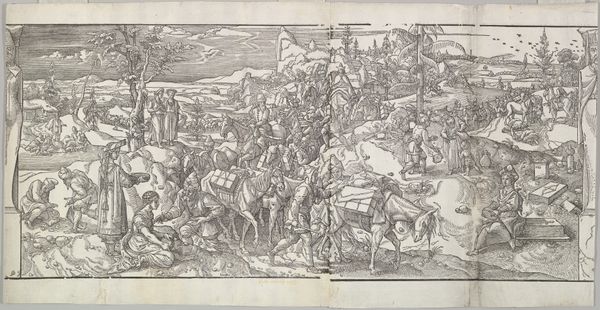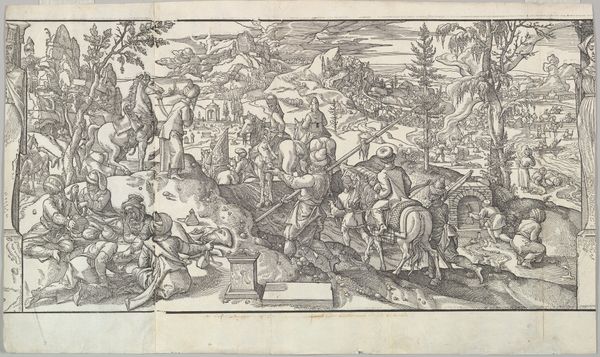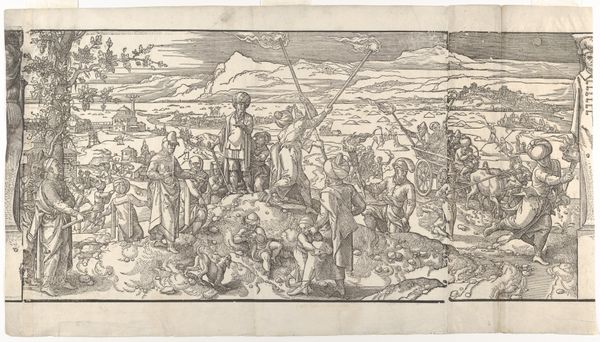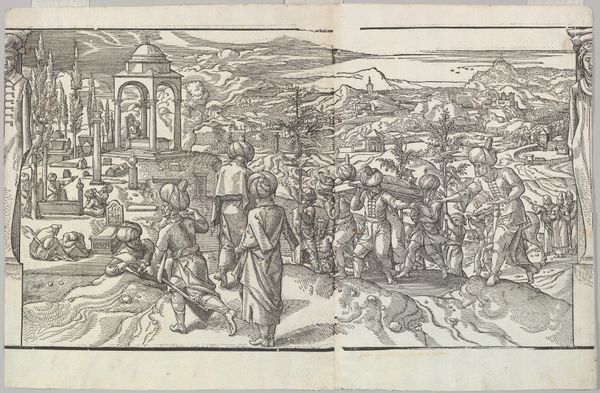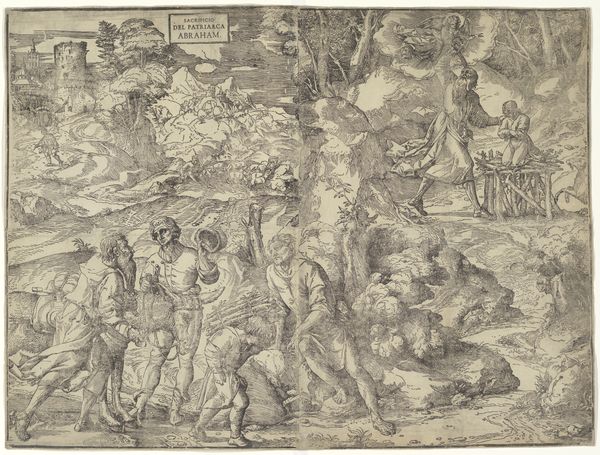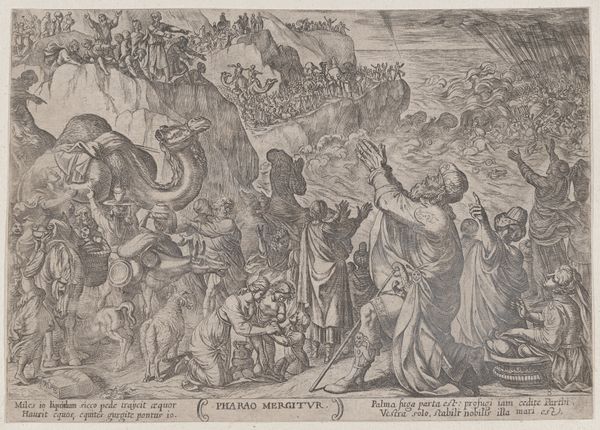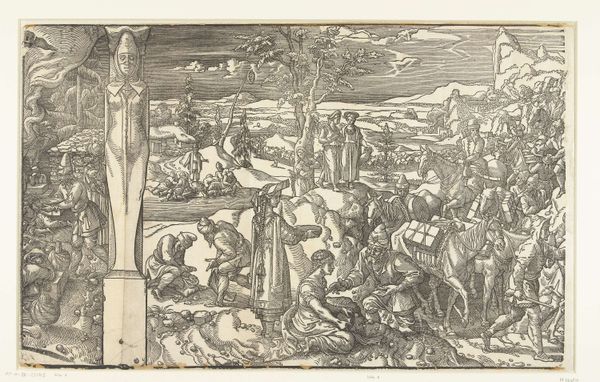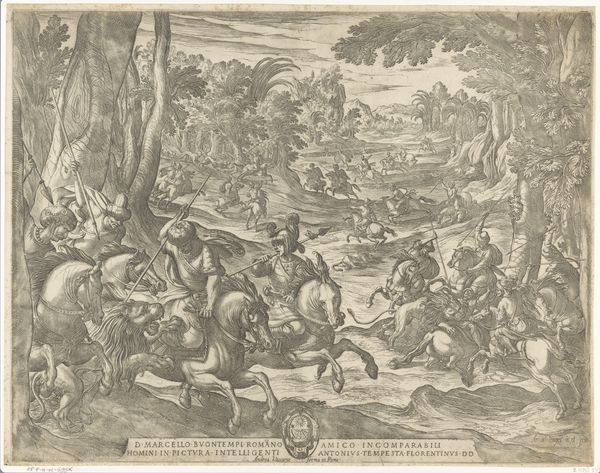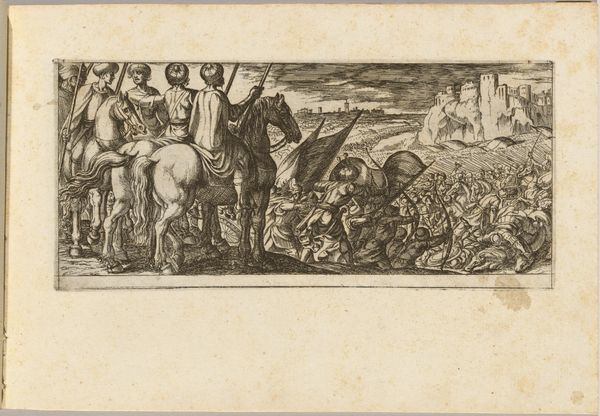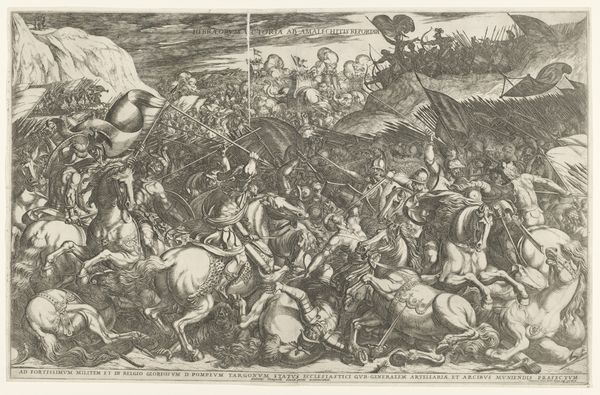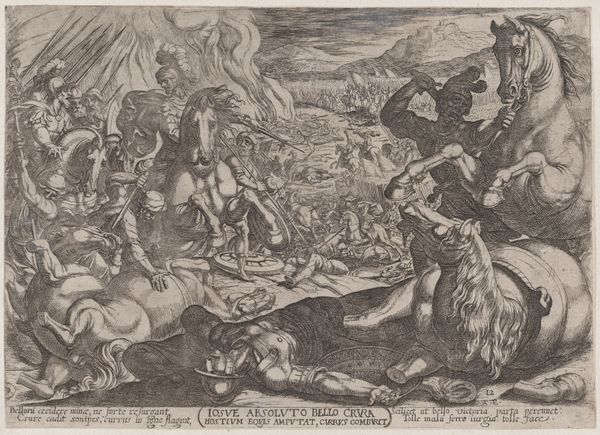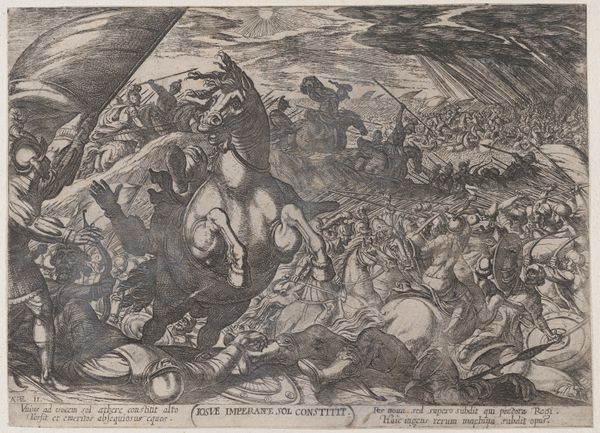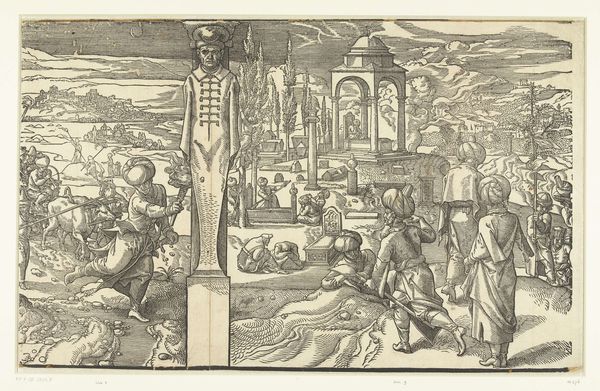
A Military Camp in Slovenia from the frieze Ces Moeurs et fachons de faire de Turcz (Customs and Fashions of the Turks) 1553
0:00
0:00
drawing, print, engraving
#
drawing
# print
#
11_renaissance
#
islamic-art
#
genre-painting
#
history-painting
#
engraving
Dimensions: Sheet: 13 7/8 × 20 15/16 in. (35.2 × 53.2 cm)
Copyright: Public Domain
Pieter Coecke van Aelst made this print, "A Military Camp in Slovenia," as part of a frieze called "Customs and Fashions of the Turks." In the 16th century, Europeans were fascinated by the Ottoman Empire, and prints like these offered a glimpse into their world, albeit a highly stylized one. This image uses visual codes to create meaning, drawing on cultural references to portray the "exotic" customs of the Turks. The scene is busy with soldiers, tents, and a landscape that is more imagined than real. It tells us less about the reality of Ottoman military life than it does about European perceptions of the time. Institutions like the Habsburg court, which commissioned similar works, played a role in shaping these perceptions. Was this image meant to inform, to entertain, or perhaps to serve a political purpose? To truly understand this artwork, we need to delve into the social and institutional contexts in which it was made. By researching period accounts, diplomatic records, and the history of artistic patronage, we can begin to unravel the complex meanings embedded within.
Comments
No comments
Be the first to comment and join the conversation on the ultimate creative platform.
